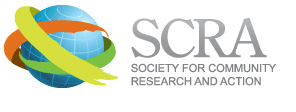By Christine Robinson and Ashley Simons-Rudolph
By linking Community Psychology principles with health information, School-Based Health Centers (SBHC)s represent needed infrastructure when schools re-open after stay-at-home orders related to COVID-19. With community and empowerment perspectives, SBHCs are a public health tool already embedded in numerous communities across the US to address youth and community health. There is an increased awareness of the value of front-line providers with the cultural fluency and relationships to convince youth and their families to adopt healthy behaviors. The time is right for Community Psychology to identify ways we can meet a new understanding of public health post COVID-19 crisis. I took a few minutes to talk with Christine Robinson about the critical role that SBHC can serve when schools re-open.
What is a School-Based Health Center?
School-based health centers, typically located within school walls provide age-appropriate health services including primary care and prevention programming targeting students and their families. There are approximately 2000 SBHCs in the United States, most in middle schools and high schools, with at least 20% receiving federal funding. School-based health centers serve an especially critical role in communities where geographic location, general lack of health care access, and economic circumstances may disrupt other pathways to health care and information that are available in other communities. School-based health centers serve a crucial role across all communities in providing additional insight to all youth on physical, emotional, and oral health. They are most often located in middle schools or high schools.
“When I make it relevant to you individually, it is more powerful.” |
Youth have increasing control over their own well-being
School-based health centers promote healthy behaviors through engagement. Although schools may provide other information about healthful living through a health/physical education class or in an academic class like biology, a school-based health center can show students how to apply information and model pro-health behavior by “living it” personally. For some youth, the customization and focus on wellness in SBHCs makes health more relevant, personal, and therefore more powerful. For many, lived experience is the most powerful teacher. SBHCs can enhance a sense of personal responsibility and empowerment. For example, students can learn proper handwashing technique and physical distancing elsewhere, but SBHCs can individualize, encourage, and model this behavior with the student. Physical distancing in the milieu of adolescent development may provide additional challenges as youth seek to fit in with peers, form friendships, and feel valued. Students with asthma for example, may have specific questions about their own health status and vulnerability to Covid-19.
What do School-Based Health Centers Provide to Communities?
SBHCs strongly align with two central tenets of the field of Community Psychology; community inclusion and partnership and empowerment [1]. Open to all students in a school, SBHCs provide individualized and developmentally and culturally appropriate information about wellness, preventative care, and disease as students grow. The universality of SBHCs serving the whole school sends a noticeable message of equity. Everyone matters in the school and everyone’s child matters in the community.
“School-based health centers can help youth better understand their own health and the impact of their health-related behaviors on community health.” |
SBHC providers connect with students using a wellness perspective rather than a point of contact for critical illness. This helps understand the importance of life-long health, healthy practices, and their relationship with health care providers. Through relationship building that is core to the SBHC model, youth come to understand providers as trustworthy and knowledgeable. This sense of respect and safety can translate into greater compliance for pro-health behavior and can reframe the health care system emphasizing long term well-being. This contrasts with an attitude that health is beyond our control. Self-regulation, self-control, and agency are significant developmental landmarks. What I eat, my personal exercise regime, and building in healthy habits makes me stronger over the lifespan. A measure of control over my physical health differs from “the doctor has a magic wand and when I go there, they give me medicine that makes me well.”
SBHCs also provide the ability to articulate and apply an empowerment perspective by supporting traditionally marginalized communities in their efforts to gain access to resources and to participate in community decision-making [2]. By modelling a warm provider relationship, youth can experience health care that counters some of the historical trauma of health care abuse in communities of color. As children move into adulthood, they understand how to care for themselves and their community. As they become parents themselves later in life or serve in a caretaking role, students bring a more comprehensive understanding of health basics and the health care system. This is a critical life skill.
How is the School-Based Health Center Model Well-Suited to Meet Needs Post COVID-19?
One thing that we have learned through community spread of COVID-19 is that everyone’s behavior matters. We have seen an increase in community contagion in areas where physical distancing was less emphasized. There is no cure presently; and our behavior is profoundly significant. Community Psychology’s approach of encouraging community-level buy-in for public health is more powerful than mandating single actions of individuals. We have also come to more clearly understand serious inequities. School based health centers, staffed with compassionate community members can facilitate dialogue on numerous community concerns and their relevance to health status including clean and running water, access to soap, safe housing, access to transportation, and the conditions of various workplaces and schools. All have implications for our collective health and well being.
“I am my brother’s keeper. I do care about my brother and sister’s welfare, well-being, and health.This is the foundation of Community Psychology.” |
This SBHC prototype intentionally integrates identity, culture, personal narratives, and a concrete approach to support positive adolescent development. SBHCs represent a collaboration with community nonprofits and the emerging shared-staffing model provides organizational enhancement, assists in academic attainment, improves health outcomes, and affirms belonging, a crucial developmental attribute for historically marginalized youth. We can use the opportunity provided by the pandemic to reflect upon ways to quickly and effectively disseminate health-related behavior. SBHCs are poised to increase well-being.
[1, 2] From https://www.communitypsychology.com/competencies-for-community-psychology-practice/
Christine Robinson is a Senior Advisor, Consultant, and President of Stillwaters Consultation. She has worked for decades designing, implementing, and evaluating systems and policies that enhance outcomes for historically marginalized communities. Her work consistently engages community voice, systems, and policies, and builds upon individual, organizational, and systemic assets while she works to bring well-being to scale.



